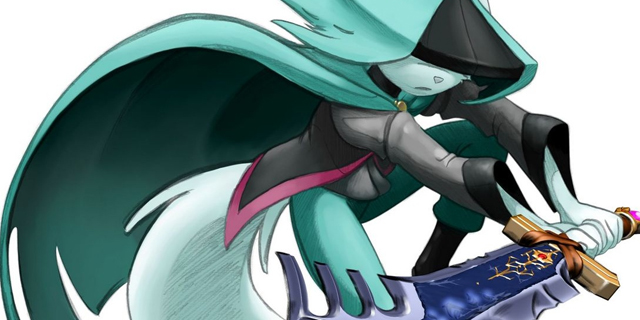
2012’s Dust: An Elysian Tail was a downloadable gem, and a labor of love for its creator, Dean Dodrill. We talked to him about his experiences making the game, thoughts on game design and what he’s working on now.
Snackbar Games: Everyone starts off somewhere. Which games influenced you the most when you first started playing? You have mentioned that Ys Book I & II for the TurboGrafx-CD in particular is your favorite game of all time. What drew you to it?
Dean Dodrill: I’ve been gaming for a long time, ever since we got our first standalone Pong machine. My earliest gaming experiences were on the TI-99 4a computer, but it wasn’t until the NES came along when a video game ignited my sense of wonder. I still remember watching a friend play Super Mario Bros. for the first time, and being blown away by the fact that you could climb into the clouds.
I played pretty much everything after that, and still do. But Ys Book I & II struck a chord like nothing else has. First off, it was one of my first CD-based games, and the combination of redbook audio and fairly complex cutscenes only made the gaming experience so much more powerful. And while it’s not a very complicated game as far as RPGs go, I just fell in love with the world and characters. Even now that game influences much of what I do as a game developer and filmmaker.
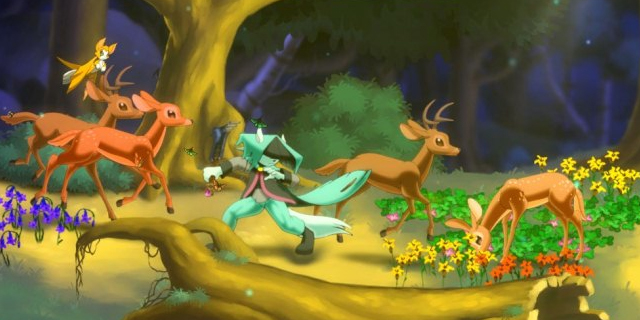
SBG: One of your first forays into game creation was working on animation for Jazz Jackrabbit 2, as well as spearheading the (unfortunately canceled) Jazz Jackrabbit 3. What was it like to work on those projects?
DD: I was fortunate enough to land a contract creating cinematic cutscenes for Jazz Jackrabbit 2 by Epic MegaGames (so named at the time). I was 19 or so, and majoring in illustration. Sadly my college offered nothing in the field of animation, so everything I knew was self-taught.
I got to meet the team at Epic, headed by Cliff Bleszinski. Epic even flew me out to E3 to help demo the game, which was a crazy experience for a gamer during those years. It really was a dream come true, working in video games and being paid to animate. While it only lasted a few months, it left an impact that came to a head over the last few years as I became serious about video games. I only regret that I waited so long between then and now.
Jazz Jackrabbit 3 was an interesting project. I assembled a group of friends to pitch the project to Epic, and while our demo was solid and well-received, Epic was focusing on Unreal and passed. It was a neat experience though, and I spent a lot of time working with composer Alex Brandon, who many years later would contribute some music to Dust: An Elysian Tail.
In fact, after Jazz 3 I decided to focus on Elysian Tail, which started life as a game, evolved into an animated film, and nearly a decade later would branch out to Dust:AET in video game form. It all came full circle.
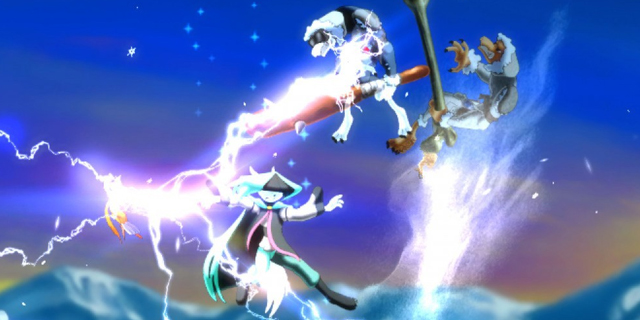
SBG: What was the development process like for you while creating Dust? What did you learn about games that you wouldn’t have otherwise? What were the major differences that came about from the final and initial versions?
DD: I would say that development on the game went surprisingly well. Dust:AET was my first time programming or making video games, so the entire process was a learning experience for me. I didn’t spend a whole lot of time doing tutorials or prototyping. I basically jumped into the game early on, and applied what I was learning into the build. I had a really solid demo done within six months of installing Visual Studio.
I was amazed at how little I actually knew about how video games work, when it comes to programming. We take everything for granted, but I wanted to learn it all, to the point that I created my own engines and editors. While I may not want to go to those lengths in the future, and just license some tech, I’m really happy that I put myself through that just to have the experience. I appreciate the mundane in video games more now than I ever have.
I also learned how to start a business, deal with a publisher, manage public relations and marketing. If I could help it I’d just focus on development, but again, these have all been invaluable experiences.
As for the game itself, not a whole lot changed between the initial build and what eventually launched. For the most part I had a clear vision of what I wanted the game to be. At some point I had to trim ideas that didn’t make sense and lock down story beats, but Dust:AET as it shipped was pretty close to what I had envisioned. I just didn’t expect it to take nearly four years to make.
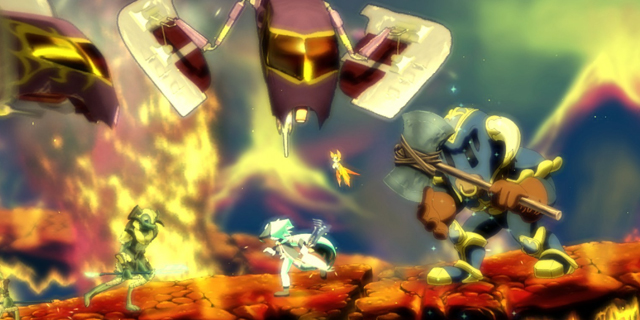
SBG: The Metroidvania subgenre is one that has proven quite popular in the wake of this generation’s indie renaissance. What do you believe makes its gameplay conventions resonate with players, and why did you believe it would be the best fit for Dust?
DD: It’s interesting to think of the Metroidvania as a subgenre, because so many games now fall into it. I think because it allows for a clear sense of progression without making your video game feel linear. It’s the open-world, but carefully gated. It allows developers to reuse areas and focus on clever design, rather than create new assets. That and people just love Metroid.
When I started Dust:AET, my original vision was to do a linear 8-bit Castlevania game (with humans!) A couple of major influences were Cadash, Blaster Master and, of course, Iga-era Castlevanias. Once I got a handle of what sort of game Dust:AET was going to be, it just made sense to make it a Metroidvania. And I thought the juxtaposition of Dust’s combat with a platforming Metroidvania would be unique.
And honestly, when I started in 2009, I didn’t really see that many games falling into that subgenre. Apparently many other indies had the same idea, because now there are no shortage of Metroidvanias out there. And I think it’s great. It’s a bit like RPG-elements, there’s no reason why these can’t be integrated into a variety of games. Indies make what they love, after all.
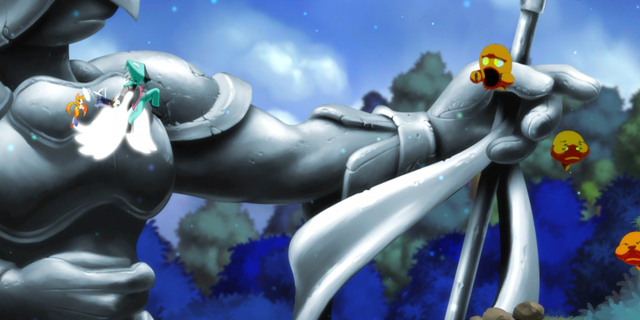
SBG: From a game design perspective, what do you believe are the most important elements in getting a player engaged in a Metroidvania game? What design philosophy did you carry in with you when creating Dust?
DD: I sort of consider Dust:AET to be a “Metroidvania-lite.” It follows certain conventions, but it’s not as tightly-knit a world as you’d get out of a true Metroid. That said, I made certain early on that the player could see areas that were not yet accessible. It sort of forces him or her to create a mental map of Dust’s surroundings. Considering how much work it was to handcraft the maps, it was nice to give the player another reason to look at the pretty artwork.
Secondly, giving the player a steady stream of upgrades that modify combat or maneuverability is a great way to empower them, and give them a clear sense of progression. Adding a very Metroid-like minimap doesn’t hurt, and I littered the world with treasure for the player to find.
These elements added variety to the game. I knew that Dust:AET would need the Metroidvania and RPG elements to keep the player engaged, even if the game initially came across as an action title. It also made development much more enjoyable, since it gave me a variety of experiences to throw at the player.
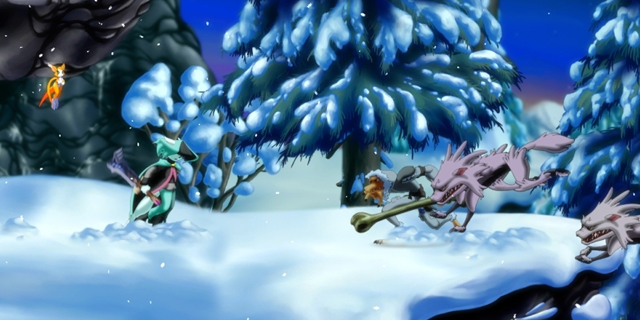
SBG: Considering Dust is a part of the larger Elysian Tail mythos you have created, where do you plan to take your franchise next? You have stated that you have been trying to get a movie in the same universe going over the course of the last decade or so; do you plan to pick that up once more?
DD: I put the movie, Elysian Tail, on hold while I worked on Dust. I’m really enjoying working on video games, and I think I’ll be sticking with that for a while. I still need to figure out what to do about the film, as I spent eight years on it and needed to shake things up (for my sanity and bank account). I’m still very excited about the film and think people would love it, even in its unfinished state, but it’ll be a while before I return to it. I will say making a video game is infinitely easier than trying to do a fully animated film by yourself.
As for video games, I do have plans for the future of the franchise, and of course other IP I’d like to do. As I wind down from Dust:AET, I’m excited for the future as this is the most enjoyable part of development, where the sky’s the limit.
SBG: You’ve recently revealed that you worked with Zeboyd Games making the trailer for its upcoming RPG, Cosmic Star Heroine. Can you say if you will be working with Zeboyd to any further degree on the game?
DD: Creating the teaser for Cosmic Star Heroine was really fun. I got to work with Bill Stiernberg, the artist at Zeboyd, who created the look for the game. I directed and composited the shots, and worked with HyperDuck SoundWorks on the audio. It was a great way for me to break in new versions of my tools (which were woefully outdated even before I started Dust), and of course do something in a very different style.
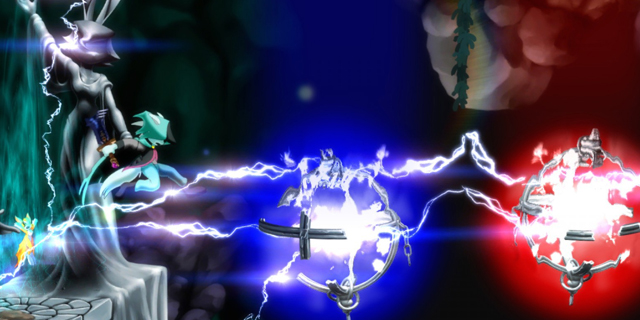
They recently funded their game via Kickstarter, and while I haven’t committed myself to the project, I may do some work with them depending on what my schedule looks like. I’m actually gearing up to do some animation work with Level Up Labs on Defender’s Quest II, and then I’m hoping to start pre-production on my next game early in 2014. I’m very excited for that project!
SBG: Dust has been one of the many indie titles that premiered on Xbox Live and later migrated over to computers via Steam. What can you say about the differences, both technical and procedural, between working with Microsoft and Valve to release your game?
DD: Dust:AET did really well on both services, and I believe that the success and buzz from the XBLA version (which was featured in Summer of Arcade) helped the game find a huge audience on PC when it launched ten months later. It actually took me most of that time to do the port, so I was glad that the audience was so receptive.
Both versions were published through Microsoft, who have been a great partner. They basically let me create the game I wanted, and helped with marketing and stuff like localization and ratings. Releasing and updating the game is definitely easier on PC, whereas it’s a bit of a nightmare on consoles, but I’m looking forward to doing it again for my next title. The landscape is pretty good for indie developers, as all of the platform holders are making an aggressive push to feature smaller games.
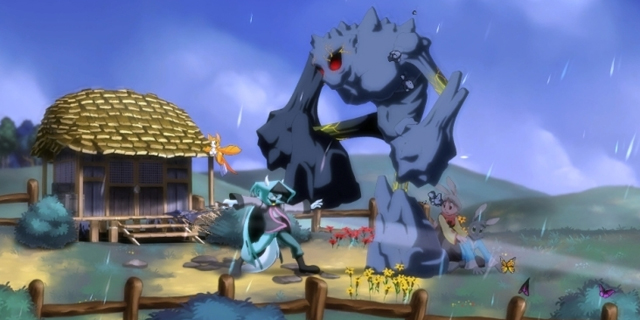
SBG: Dust was just released on GOG as well. What differences in the two distribution models have you found as a developer that aren’t quite apparent to the consumer?
DD: GOG has been great to work with, and they’ve actually given me more one-on-one time with their team than Valve did. So far the GOG user base has been very receptive, and I’m glad to offer the game to that audience. It’s a bit early to say how the game is doing, but I know Steam has the lion’s share of the market. I’m a big fan of both services and am glad that PC gamers have so many options. Between those two, the new Humble Bundle store and new consoles coming out, there’s never been a better time to be an indie developer or a fan of their games.
Thanks to Dean Dodrill for answering our questions! You can keep up with his latest projects by following him on Twitter at @NoogyTweet.



















